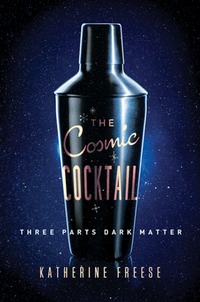Review: The Cosmic Cocktailby Jeff Foust
|
| Freese suggests in the book that “any time now, the question of the dark matter may be answered” by any one of the wide range of experimental approaches. |
The front matter of The Cosmic Cocktail includes a recipe for this whimsical cocktail: three ounces of dark matter, seven ounces of dark energy, and a smattering of ordinary matter and energy that totals a little more than half an ounce. (Directions: “Shaken, not stirred.”) The point of this is to demonstrate that the bulk of what constitutes the universe—whose existence is known based on the effects we observe—remains a mystery to astronomers today.
Freese, who has spent much of her career studying dark matter, devotes much of the book on the quest to identify dark matter. It’s a search that has brought together astrophysics and particle physics (sometimes called particle astrophysics or astroparticle physics) to find the particle massive enough to account for the dark matter indirectly observed to surround galaxies, yet whose other characteristics render it effectively invisible. It’s a search for such particles, called weakly interacting massive particles (WIMPs), that has led to experiments both buried deep within the Earth and located in space, such as the Alpha Magnetic Spectrometer on the International Space Station (see “Shining light on dark matter”, The Space Review, February 24, 2014).
Freese’s extensive research in this field, and her familiarity with many of the other key researchers in dark matter, helps give The Cosmic Cocktail a human touch: she sprinkles into the book anecdotes from her own career and meetings with other scientists throughout. However, the focus here is on the science, and she dives into both the science of dark matter and the efforts to attempt to identify it. That can make the book at times a little dense, weighed down with the acronyms of various experiments or the intricacies of supersymmetry. It’s not a book to skim, but it is one that can give the educated layperson a thorough introduction to the science of dark matter.
Although dark energy makes up most of the book’s titular cocktail, it is not the primary constituent of the book itself, getting just the book’s final chapter: a quick summary of the observational evidence of its existence and potential explanations of what it could be. At the end of the book, she’s skeptical that the mystery of dark energy will be resolved any time soon. On dark matter, though, she’s more optimistic, suggesting that “any time now, the question of the dark matter may be answered” by any one of the wide range of experimental approaches. That will certainly give astronomers plenty to talk about at many conferences to come.
